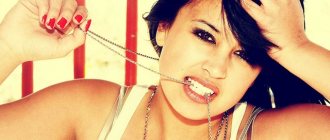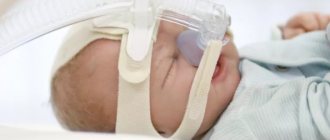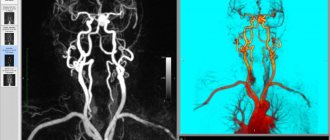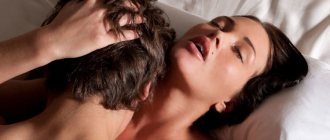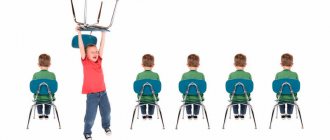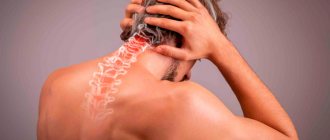Obsessive-compulsive disorder is a specific condition in which the patient suffers from fears, doubts and obsessive thoughts. This disease can be cured, but it will require long-term and serious work. Stable remission can only be achieved through the work of a qualified and experienced psychotherapist with the patient. During the treatment process, the doctor initially carries out diagnostic procedures. Thanks to this, it is possible to determine the main direction of individual treatment. It should be understood that patients are unlikely to be able to cope with the disease on their own. Therefore, even drug treatment may be required. The sooner you seek help from specialists, the faster you will be able to overcome this disorder.
Obsessive neurosis
Obsessive-compulsive neurosis is a psychiatric illness that is accompanied by frequent intrusive anxious thoughts. Patients do not have the ability to suppress them on their own. As a result, the problem is only beginning to gradually gain momentum and get even worse. People suffering from this disease often begin to perform peculiar rituals. For example, opening doors a certain number of times, turning lights on and off in a given rhythm. But a person fully understands the inadequacy of his actions and their negative consequences, but at the same time he cannot stop himself, repeating “traditions” again and again.
Prevention of obsessive-compulsive disorder
The main method of preventing neurosis in children is a favorable atmosphere in the family. Parents need to exclude exposure to factors that provoke the development of pathology. Communication with your child, traveling and visiting interesting places, and common hobbies will help you avoid gloomy thoughts and fill your free time. Keeping your child busy with a variety of activities, including physical exercise, is extremely important. If behavioral disorders are detected, urgent consultation with a specialist is necessary.
General prevention:
- normal sleep and strengthening the immune system;
- good nutrition;
- preventive use of vitamin-mineral complexes;
- favorable atmosphere at work and in the family;
- avoiding conflicts and quarrels;
- increasing the brightness of light in rooms;
- dosing of coffee consumption;
- timely treatment of chronic pathologies.
If you have any questions, please contact our medical center. At a personal appointment, a specialist will tell you which doctor treats neuroses and what diagnostic methods are necessary in your case. You can make an appointment on the website and by calling the above phone numbers.
Related services: Consultation with a neurologist Causes, symptoms and treatment of stuttering
Obsessive Action Syndrome
Obsessive behavior syndrome can take three forms:
- One-time, which implies that the signs of neurosis can last for a long period, being at the same level of intensity.
- The remitting form characterizes a situation when signs of neurosis periodically worsen and then fade.
- The progressive form of neurosis implies that the symptoms only begin to worsen over time.
Obsessive behavior syndrome may occur due to the influence of biological factors, such as heredity or the presence of organic changes in the brain. But there are cases when acute psychological trauma and severe losses in a person’s life contribute to the disease. But obsessive actions can only arise in a patient if there is a biological tendency. If it is not there, the psyche reacts predominantly in a completely different way.
Obsessive behavior in adults
Experts divide manifestations of obsessive actions in adults into several categories, including:
- Classic tics, which are manifested by rapid movements of the head or neck. Also, tics of this type can also manifest themselves in sound, for example, constant mooing, coughing and much more.
- The stereotypical category includes frequent rocking in different directions, tapping fingers on the table surface, and jerking the leg. With such behavioral disorders, there are no prodominal signs that are harbingers of the onset of the disease.
- Behavioral disorders that cause physical harm to the patient - hair pulling, scratching or picking at skin, nail biting.
Such actions are performed unconsciously, since a person involuntarily performs certain actions. The tick stops for a while if requested by loved ones or if a situation arises that will distract from the “procedures.” However, after some time, this situation will certainly repeat itself again and again.
Symptoms of obsessive actions and thoughts:
● Children sometimes describe their obsessions as “bad thoughts” or fears, which can come across as preoccupation. Sometimes it is very difficult for them to describe or put into words what exactly is bothering them. But they are forced to participate in rituals that help relieve, at least temporarily, their anxiety or discomfort. ● For example, a child may have an intense, recurring fear of someone breaking into the house and harming someone in the family. This fear is an obsession. The child may insist on constantly checking that doors and windows are locked before bed. These repeated actions are rituals. ● Another common obsession is the fear of germs, which is accompanied by compulsive hand washing. ● In some cases, children feel uncomfortable or convinced that something must be “right” or “just the way it is.” Therefore, the child can take the sock off and on again and again until it feels “right.”
| About one in 100 children has either OCD or exhibits symptoms similar to, but less severe than, OCD. OCD can be diagnosed by a mental health specialist: psychologist, psychotherapist, psychiatrist, neurologist. |
Obsessive behavior in children
Obsessive behavior in children is a fairly common problem that many parents face. The disorder most often manifests itself when the child constantly bites his nails, twirls the hair on his fingers, and picks his nose. After repeated comments, the situation does not improve at all, repeating itself again and again. In this case, we are not talking about simple habits at all, but about neurosis. Therefore, it is quite difficult to deal with obsessive actions.
There can be many reasons for the manifestation of this type of illness, including divorce of parents, great fear of dog bites, or, for example, a child was once very scared because he almost drowned while swimming. Also, the reasons may be physiological, for example, after sinusitis in an advanced stage, which resulted in chronic intoxication of the body. It is important to start dealing with the situation in a timely manner, since fears that manifest themselves in childhood can develop into severe phobias after reaching adulthood. Therefore, if you notice regular habits in your child, such as tugging at the earlobe, cracking fingers, or any other actions that occur with enviable regularity, it is important to contact a specialist in a timely manner.
OCD in children
During adolescence and childhood, OCD symptoms can take on specific forms and vary from one child to another. The following are some common examples of intrusive thoughts and ideas in children and adolescents who exhibit obsessive-compulsive disorder:
- Exaggerated fear of becoming dirty from contact with certain people or household items such as clothing, shoes, sports or school equipment
- Excessive doubts due to whether the child closed the door, window, turned off the water, turned off the light, stove or other household appliances
- Anxiety due to unpleasant thoughts and images in the head
- Excessive preoccupation with increasing and heavy homework
- Exaggerated concern about the symmetrical arrangement of household items such as shoelaces, textbooks, clothing, or food
- Fear that he might accidentally harm his parents, brother/sister, or friend
- Superstitious fear that something bad will happen if you do a seemingly incoherent behavior (or won't happen)
Some common examples of compulsive behaviors in children and adolescents diagnosed with obsessive-compulsive disorder (OCD):
- Compulsive/repetitive hand washing, bathing or showering
- Certain rituals in behavior, according to which the child must touch certain parts of the body or make certain body movements in a certain order or symmetrical shape
- Certain, repetitive bedtime rituals that interfere with normal sleep and sleep
- Obsessive repetition of certain words or actions to ensure that nothing bad will happen
- Obsessively seeking reassurance from parents or teachers that they have not caused harm
- Avoiding/preventing situations in which they feel something bad might happen
In addition to the above symptoms, children and adolescents diagnosed with Obsessive-Compulsive Disorder may experience secondary problems that arise from their obsessions and/or compulsive behaviors (compulsions) and affect their daily life. Problems with learning, behavioral problems, conflicts with peers, sleep disturbances, conflicts in the family - these are just some of the secondary symptoms that appear in children and adolescents suffering from OCD. Unfortunately, these difficulties quite often become the focus of psychological attention, while the Obsessive-Compulsive Disorder that is actually causing them remains untreated.
Just like adults, children and adolescents diagnosed with Obsessive-Compulsive Disorder engage in compulsions (compulsive behaviors) and/or avoidance behaviors in order to reduce anxiety that is caused by unwanted, intrusive ideas (thoughts). Although it may seem at first glance to reduce anxiety and obsessive ideas/thoughts, it actually worsens the symptoms and worsens the person's condition in the long term. This in turn leads to an increase in intrusive, unwanted thoughts (compulsions), which leads to increased compulsions and increased anxiety.
For most children and adolescents who exhibit obsessive-compulsive disorder, treatment options are the same as for adults with OCD. These CBT techniques, called Exposure and Response Prevention and Cognitive Restructuring, are very valuable in treating children and adolescents who have obsessive-compulsive disorder. The method of “imaginary representations” is also used; it is based on the use of short stories that are associated with the child’s obsessive thoughts. When combined with a standard set of exposure and response prevention techniques and cognitive restructuring, imagery techniques can significantly reduce the frequency and intensity of symptoms.
Obsessive behavior after stroke
A stroke is a disruption of blood circulation in the brain that results in necrotic damage to nerve cells. Recovery from a stroke is a long process, during which a person will need to relearn basic things - talk, walk and even eat. This condition takes a toll on the patient’s psyche. As a result, it is not at all uncommon for obsessive behavior to occur after a stroke. In this case, a person often simply refuses to make any efforts to improve his condition. It seems to the patient that everything should go away on its own. A person is often completely confident that he can return to his previous life without any problems. When faced with failures, the result is deep depression and nervous breakdowns. This affects not only the patients themselves, but also their loved ones, who are unable to provide proper assistance on their own. Patients require 24-hour medical supervision. The patient needs the help of a qualified psychotherapist and psychologist, since difficult work lies ahead, the goal of which is to restore the person’s desire for life and the desire to achieve more and more success. Drug treatment for obsessive-compulsive disorders is used quite rarely, since a person under the influence of anidepressants loses the so-called “fighting spirit”. The work is carried out mainly in the form of dialogue with the doctor.
Treatment of obsessive behavior
When treating obsessive-compulsive disorders, an integrated approach will be required, which includes psychotherapy, during which a specialist works individually with the patient, drug treatment to correct anxieties and fears, and multiple modern relaxation techniques. Thanks to individual psychotherapy sessions, it is possible to determine the reasons why a person got into this situation. In the case when the patient begins to understand what exactly is the cause of obsession, the situation is much easier to control.
Thanks to cognitive behavioral therapy, you can achieve excellent results after just a couple of sessions. The doctor teaches his patient to detect and change negative attitudes to more optimistic ones. Thanks to this, the patient begins to gradually control his behavior, coping with a stressful situation.
Drug treatment is a last resort. For this type of therapy, patient consent is required. Antidepressants, anxiolics, which help fight anxiety, and sedatives, which can help overcome depression and increased anxiety in a shorter period, are taken as medications. As a result, sleep gradually normalizes and the patient’s general condition improves. Treatment must be carried out until the disease is completely defeated. That is, the course lasts until the patient is unable to independently control the disorder and all symptoms of the disease disappear completely.
If you are faced with this difficult situation, you must definitely contact a specialist. Our Salvation clinic has created the best conditions for a favorable exit from a neurotic state. Our staff consists of qualified psychotherapists who have extensive practical experience. Specialists practice the latest effective techniques, through the use of which you can achieve good results in a short time.
How to treat anxiety neurosis
Psychotherapeutic treatment methods: psychoanalysis, cognitive behavioral psychotherapy, hypnosuggestive therapy and group therapy using soothing music for depression and neurosis.
The goal of psychoanalysis is to identify a traumatic situation and thoughts associated with it. The method of free association is used.
The goal of cognitive behavioral psychotherapy is to learn to calmly deal with intrusive thoughts without reacting to them with certain actions.
The goal of hypnosuggestive therapy is to instill in the patient the correct model of behavior.
Group therapy is used to support the patient.
Drug therapy for the syndrome includes the use of various antidepressants, anticonvulsants and selective serotonin reuptake inhibitors. The dosage and duration of treatment is determined by the doctor.
Auxiliary methods for the treatment of fear neurosis and panic attacks: acupressure (acupressure), herbal medicine, the use of omega-3 fatty acids.
With timely diagnosis and comprehensive treatment, the prognosis of the disease is favorable.


